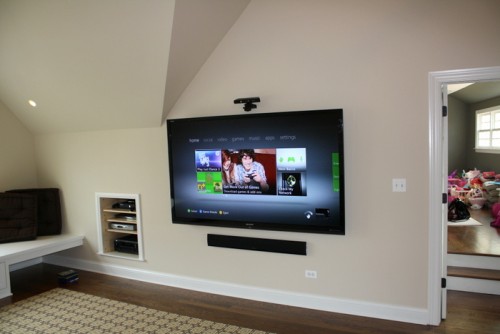
Organic light emitting diode technology, or OLED, is the most recent advancement for television screen technology. OLED televisions were introduced to the market in 2013, and will soon replace most plasma televisions.
How does it work?
In order to create an image, you need red, green, and blue light. OLEDs work by transmitting electricity through materials that glow in these specific colors. No other technology is able to create direct light like OLEDs do. The result is purity in color and image clarity that is superior to plasma and LED televisions. In addition to purity in color and image clarity, another great advantage of OLEDs is the ability to design a much thinner and lighter television, since there is no need to have a backlight to activate each color pixel on the screen. Another attractive advantage is the ability to turn off each pixel for an absolute black allowing for an infinite contrast ratio.
Comparing Your Current LED to an OLED
An LED flat screen television is, in fact, an LCD television receiving backlighting via LED. The use of LED lights makes them more efficient than LCDs and Plasma flat screen televisions, as far as electricity usage. OLED televisions have significantly better efficiencies than LED televisions. On an OLED television, organic materials such as carbon allow for light-emitting qualities on large flat surfaces, whereby an LED has numerous small LED backlights lighting specific areas of a screen. Your OLED will be significantly thinner, brighter, clearer, and more efficient than your LED. Additionally, viewing angles on an OLED screen are much wider.
What About Cost?
Because OLED flat screen television is a new technology, the prices are significantly higher than LED or plasma. Starting at about $7,000, and going as high as $16,000, implementing OLED technology as part of your home theatre professional upgrade may prove to be price prohibitive for some.
If the reasoning to purchase an OLED is exclusively energy savings you may want to wait until the price becomes more accessible to the masses. If, on the other hand, you are a fan of high quality images and you have sufficient economic bandwidth to underwrite the upgrade, by all means do it. Not only will you have a television with tremendous richness in terms of color, but your level of clarity regardless of the distance will be significantly higher than what you are currently enjoying with your LED or plasma flat screen television. As an added plus OLEDs maximize aesthetics and space usage by providing television designers with the ability to deliver a device that is significantly thinner and features a lighter frame. Aesthetically you could not ask for a more elegant focal point for the family room or home theatre.
Before you move forward with your OLED upgrade, discuss your options with your professional home installer. He will point you the best tried and true audiovisual technologies.

